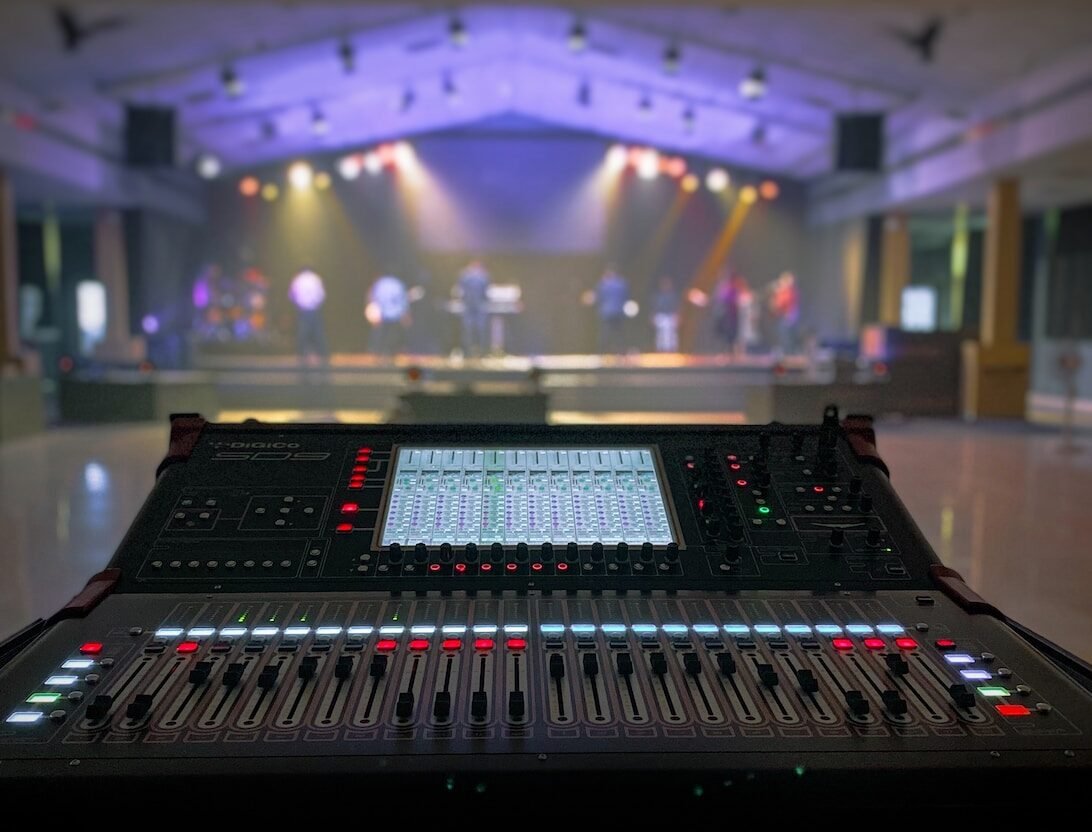
Choosing a mixer for live performance can be a daunting task, but here are some key factors to consider when making your decision:
Number of channels:
Make sure the mixer has enough channels for all the instruments and microphones you plan to use in your live performance. You may also want to consider future expansion possibilities. Here are some common channel options available on the market:
- 2-4 channels: These mixers are typically compact and portable, and are suitable for solo performers, duos, or small groups with just a few instruments and microphones.
- 6-8 channels: Mixers with 6-8 channels are suitable for small to medium-sized bands or groups that require additional inputs for drums or other instruments.
- 10-16 channels: Mixers with 10-16 channels are suitable for larger bands or groups with multiple instruments and vocalists, and can accommodate a full drum kit and additional percussion.
- 24-32 channels: These mixers are suitable for larger ensembles or for recording live performances with a lot of channels. They offer more flexibility for mixing and processing individual instruments and vocals, and can support multiple monitors or monitor mixes.
- 48+ channels: Mixers with 48 or more channels are typically used for large-scale productions, such as concerts or theatrical performances, where a high number of channels is required to manage the sound from a large number of microphones and instruments.
Input and output types:
Consider the types of input and output connections that you need. For example, do you need XLR or TRS inputs for your microphones and instruments? Do you need balanced outputs to connect to your speakers or other equipment?
Sound quality:
Look for a mixer with high-quality preamps and a clean signal path to ensure the best possible sound quality for your performance. A preamp is a device that amplifies the low-level signal from microphones and other sources, and provides gain control and impedance matching to optimize the signal for further processing or amplification. A high-quality preamp can make a significant difference in the sound quality of your live performance. A good preamp can help to increase the clarity and detail of your audio signals, as well as reduce noise and distortion. When evaluating a mixer’s preamp, consider factors such as its noise level, frequency response, distortion, and gain control. Look for a mixer with a preamp that offers clean, transparent amplification with a low noise floor, and has enough gain to accommodate a variety of microphones and other input sources.
Ease of use:
Consider the ease of use of the mixer, including the layout of the controls and any additional features that may be important to you, such as built-in effects or EQ.
Size and portability:
Determine the size and weight of the mixer that you need for your live performance setup, and consider whether you need a mixer that is portable and easy to transport.
Brand and reputation:
Research the brand and reputation of the mixer to ensure that it is reliable and will meet your needs for your live performances.
Budget:
Finally, consider your budget and look for a mixer that offers the best value for your money. Keep in mind that a high-quality mixer can be a worthwhile investment for your live performance setup.

Different mixers also offer a variety of different features that can be useful for live performances, including:
- Built-in effects:
Some mixers come with built-in effects such as reverb, delay, chorus, and compression. This can be a convenient feature if you want to add effects to your sound without having to purchase additional equipment. - EQ:
Many mixers have EQ controls that allow you to adjust the frequency response of each channel. This can be helpful for shaping the sound of individual instruments or vocals to fit the overall mix. - Aux sends:
Aux sends allow you to send a copy of a channel’s signal to an external effects processor or monitor mix. This can be useful for creating separate mixes for performers on stage, or for sending signal to outboard effects processors. - Subgroups:
Subgroups allow you to group multiple channels together and control them as a single unit. This can be useful for managing large groups of instruments or vocals and can simplify the mixing process. - Digital connectivity:
Some mixers offer digital connectivity options, such as USB, FireWire, or Ethernet, which can be useful for recording your live performances or controlling the mixer remotely. - Feedback suppression:
Some mixers offer built-in feedback suppression, which can help to reduce feedback caused by microphones or other equipment. - Channel inserts:
Channel inserts allow you to insert an external effects processor or other signal processing equipment into a specific channel. This can be helpful for using specialized equipment or for applying effects to a specific channel. - Motorized faders:
Motorized faders allow the mixer to automatically recall and adjust settings for different songs or performances. This can be a useful feature if you need to make frequent adjustments to the mix during a performance. - Wireless control:
Some mixers can be controlled wirelessly using a tablet or smartphone app. This can be useful for controlling the mixer from a distance or for making adjustments from different locations on stage.
Ultimately, the specific features that you need in a mixer will depend on your performance setup and your individual preferences. It’s important to evaluate your needs carefully and choose a mixer that offers the features and capabilities that will help you achieve the best possible sound for your live performances.

